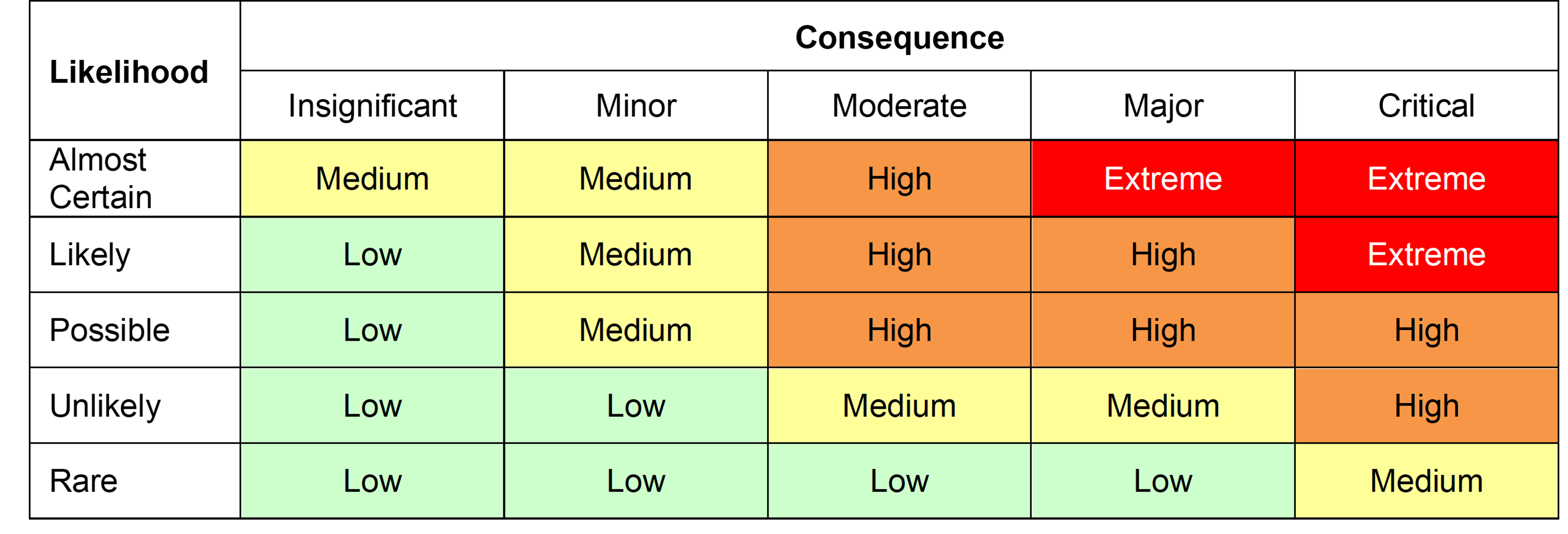The Risk Management approach is the basis of all Work Health and Safety Management activities, from creating and adopting policies and procedures to reviewing and monitoring the effectiveness of those policies and procedures.
Hazards should be identified before incidents occur ideally, risk assessments should be performed in conultation with workers and using a risk matrix, example above, if the level of risk is not obvious, control measures should then be identified and implemented. The best control is to elminate the hazard and therefore the risk altogether, the least effective is to mitigate the risk as much as possible by requiring workers to wear Personal Protective Equipment such as masks, eye protection, gloves, heaing protection or other relevant equipment.
Risk Management has always been one of the pillars of a successful Health and Safety Management System. Risk identification and assessment can be a daunting prospect for both managers and workers when it is misunderstood.
Identifying hazards before an incident occurs is the preferred and proactive culture that is the most effective. This includes making sure that workers report near misses as well as all incidents that occur at work or impact their ability to work safely. The process of identifying and reporting hazards and incidents requires a “No Fault” approach so that workers feel protected and comfortable being honest about near misses and any mistakes they may have made that contributed to the incident.
Once reported all hazards, near misses, and incidents must be investigated and the results disseminated to all workers particularly if there is to be a change in standard opertating procedure, new equipment, or other control measure.
So what is a hazard and how do you find them?
A hazard is anything that has the potential to cause harm. This can be a physical hazard such as a slippery floor, or a psychological hazard such as feelings of isolation and disconnecedness often experienced by remote workers.
The more potential hazards and risks workers and others identify the better. It is up to management to encourage workers to identify and report all hazards, near misses, incidents, and risks that they can so that the risk level can be assessed.
It is the unidentified hazards and risks that continue to threaten the health and safety of everyone in the workplace.
The current standards for Risk Management can be found at the Standards Australia web site.

